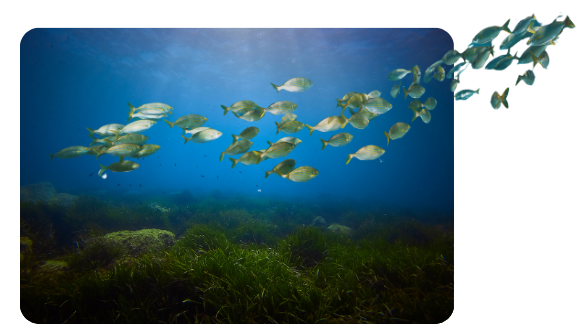Story
PML welcomes the RRS Sir David Attenborough to Plymouth
15 October 2025
The scientific research ship is visiting Plymouth on her way to the Antarctic summer season
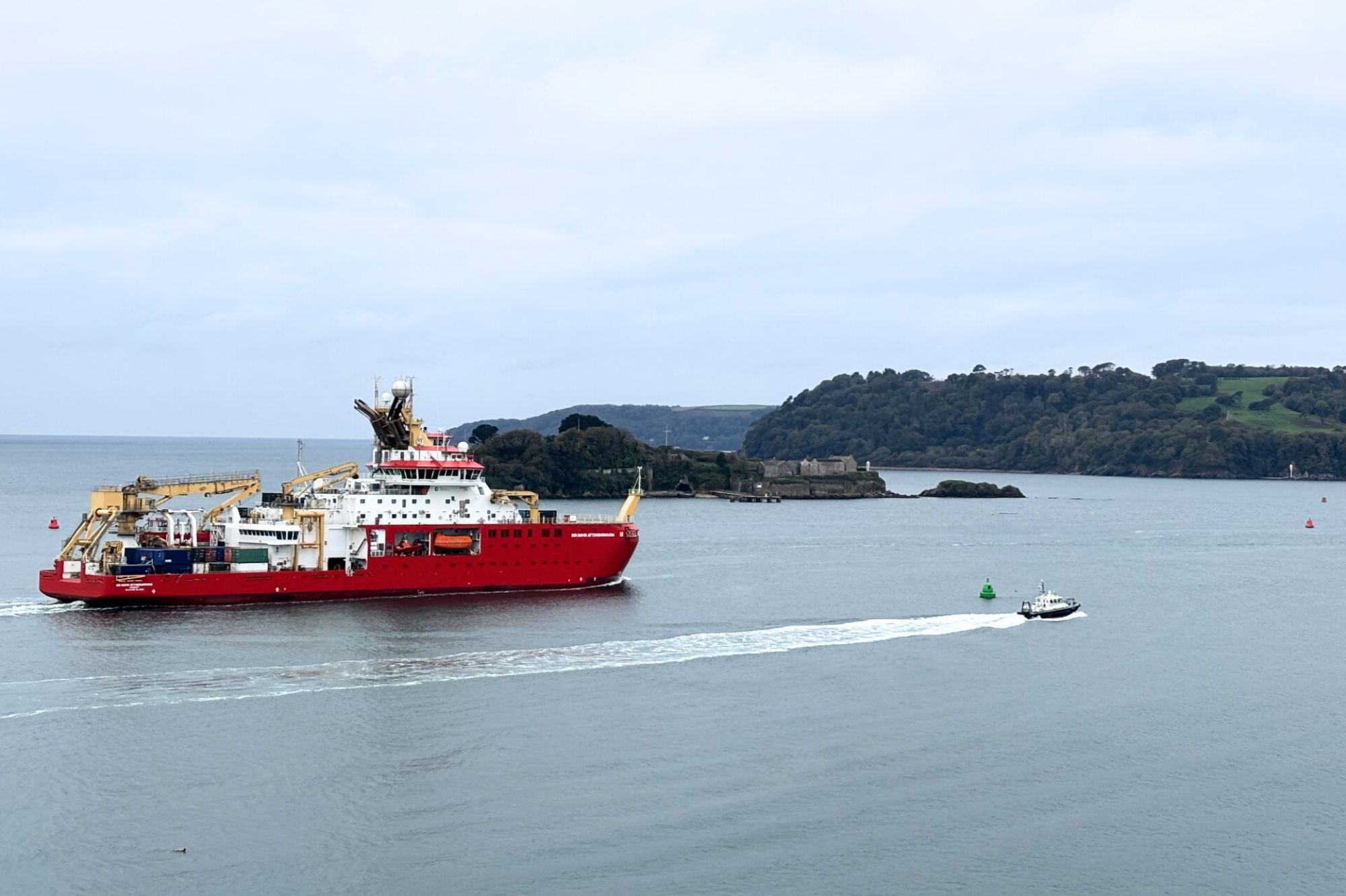
Image: The RRS Sir David Attenborough pictured at the fore of Drake’s Island – Plymouth Sound. Image credit: Dr Rachael Rees
The RRS Sir David Attenborough, one of the world’s most advanced polar research vessels, has arrived in Plymouth with PML staff getting an opportunity to see the world class ocean-going marine facility first-hand.
At 125 metres long with an ice-strengthened hull which is designed to break through ice up to one metre thick, the ship – which is operated by the British Antarctic Survey (BAS) – provides polar researchers, including teams from PML, and their international collaborators, with cutting-edge facilities to study the ocean, seafloor, ice and atmosphere.
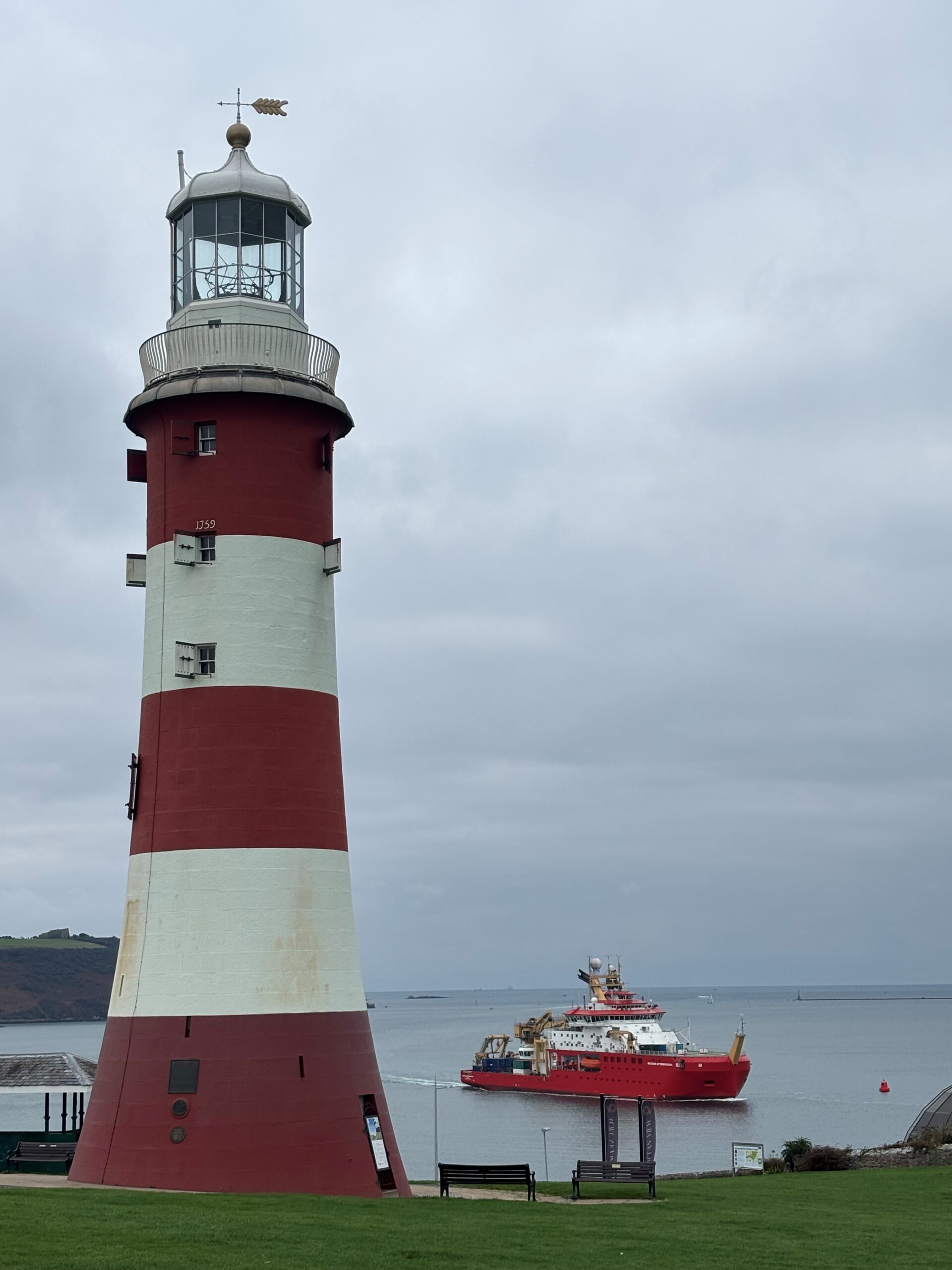
Image: The iconic red colour of the vessel was mirrored by Smeaton’s Tower – a redundant lighthouse situated on the West Hoe of Plymouth. Image credit: Dr Rachael Rees
The state-of-the-art vessel was commissioned by the Natural Environment Research Council (NERC) and built by Merseyside-based Cammell Laird. Equipped with sophisticated scientific facilities including reconfigurable laboratory spaces and advanced marine robotics capabilities, the vessel can accommodate 30 crew members and 60 research staff, with the capacity to carry two helicopters and approximately 900 cubic metres of cargo.
She is also the first British polar research ship to feature a “moon pool” – a vertical shaft (4 x 4m) running through the vessel, open to both the air and sea. Using the moon pool, scientific equipment can be deployed and recovered through the centre, and most stable part, of the hull. This is easier and safer than deploying equipment over the side or stern, particularly in the polar oceans’ rough seas.
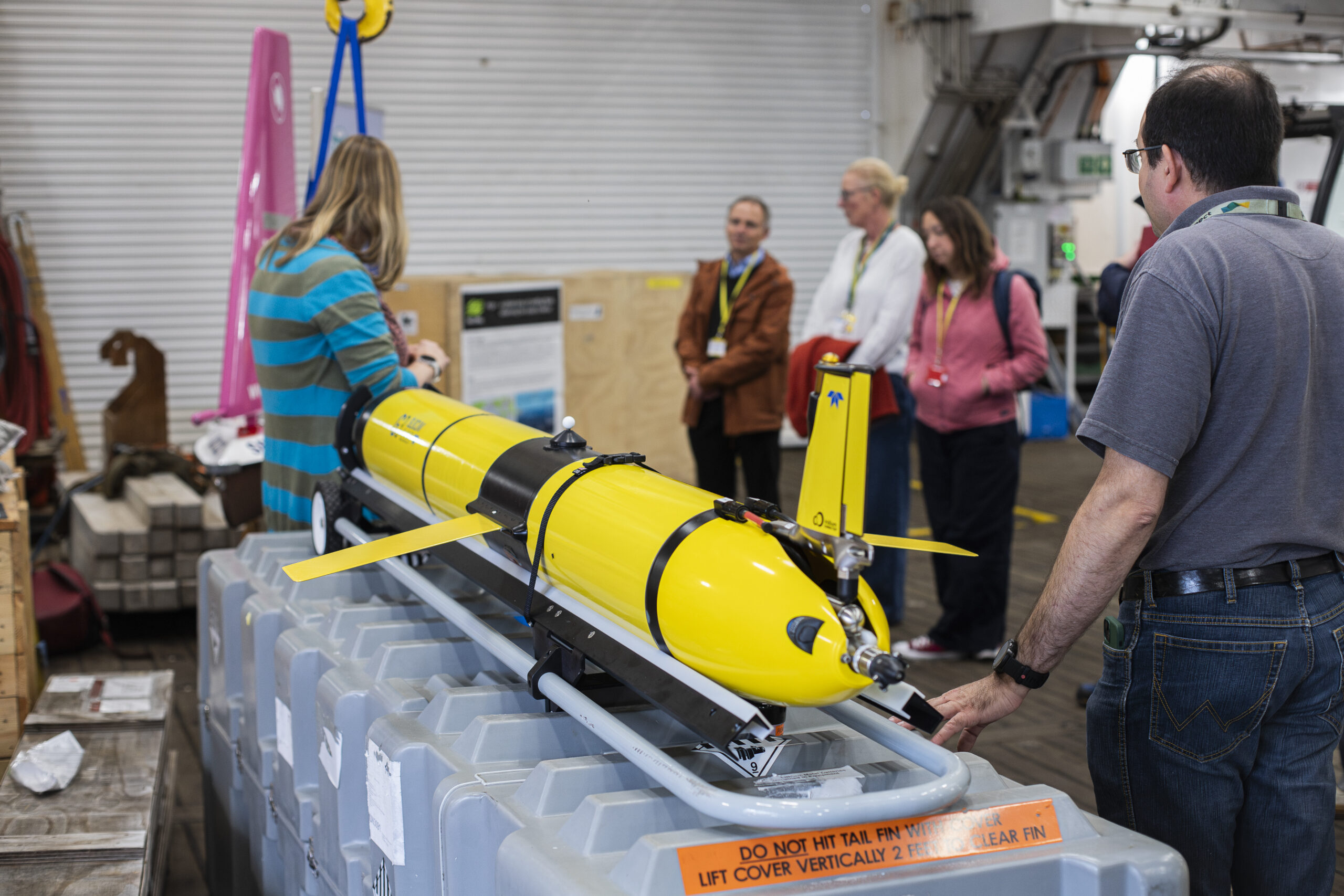
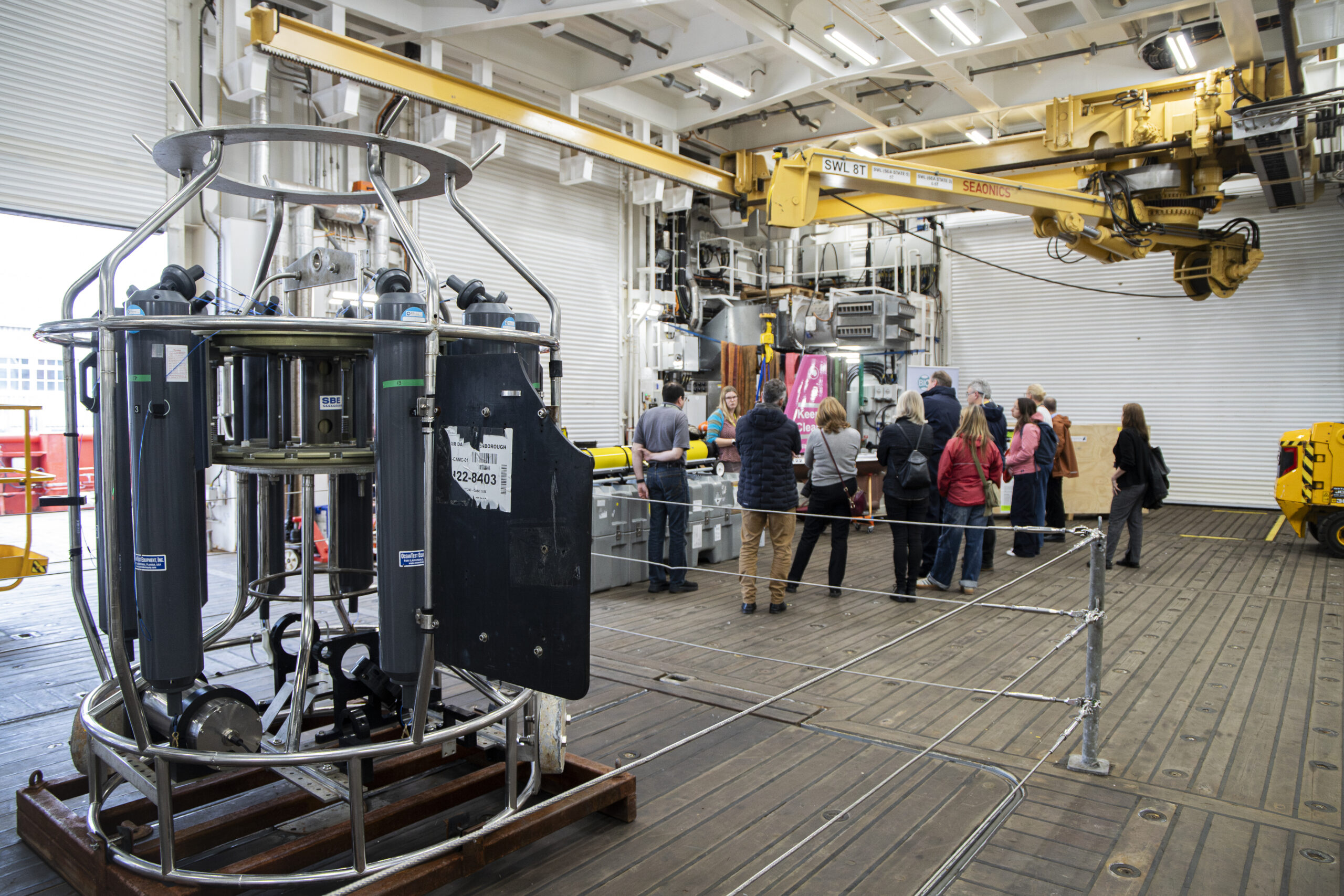
Images above: PML colleagues being given a tour of some of the scientific equipment on board. The yellow Autosub is autonomous unmanned vehicle (AUV) that travels beneath sea ice, carrying a variety of scientific instruments to inaccessible parts of the ocean, to make measurements of Antarctic krill distribution and abundance, and of ice thickness.
From the ship, scientists can deploy, operate and control a range of remotely piloted science instruments at the same time, meaning they can gather measurements from both airborne and marine remotely operated vehicles and autonomous platforms simultaneously.
“The RRS Sir David Attenborough plays a vital role in improving our understanding of key polar atmospheric and oceanic processes that regulate our climate,” said PML’s Director of Science Professor Tim Smyth.
“Her unique capabilities are helping us to enhance our knowledge of polar ecosystems and their role in our changing world. We’re delighted to welcome her to Plymouth.”
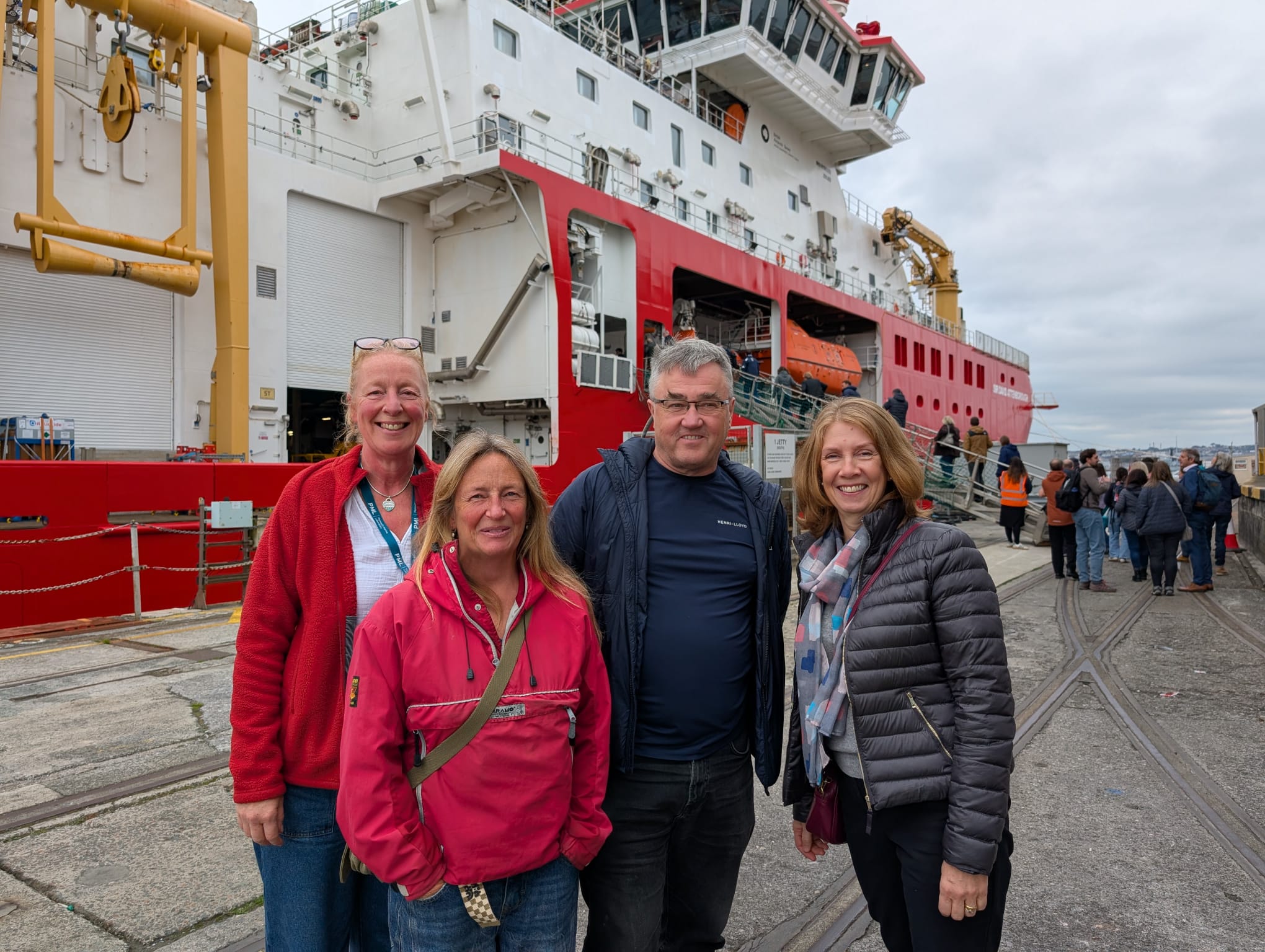
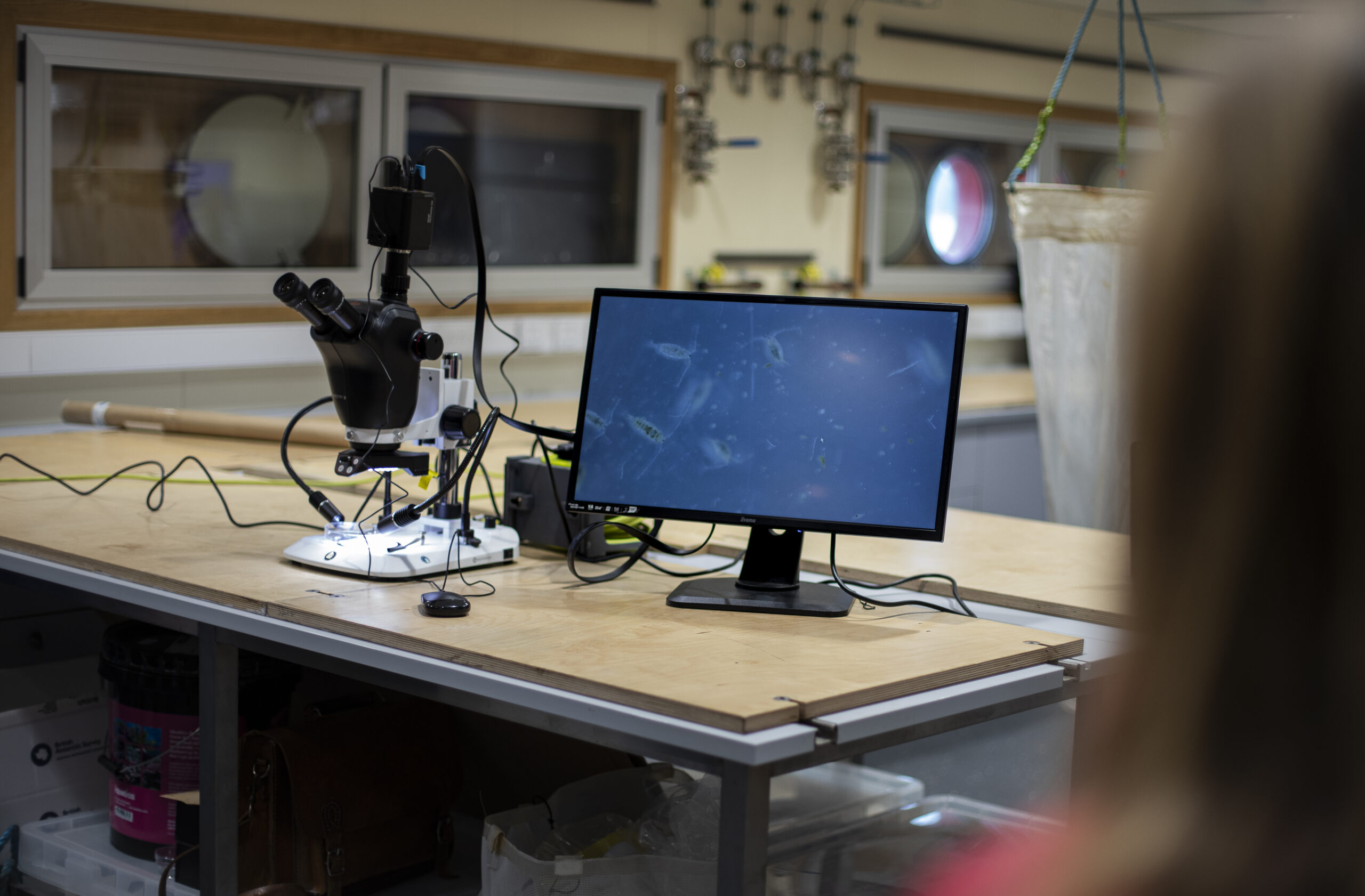
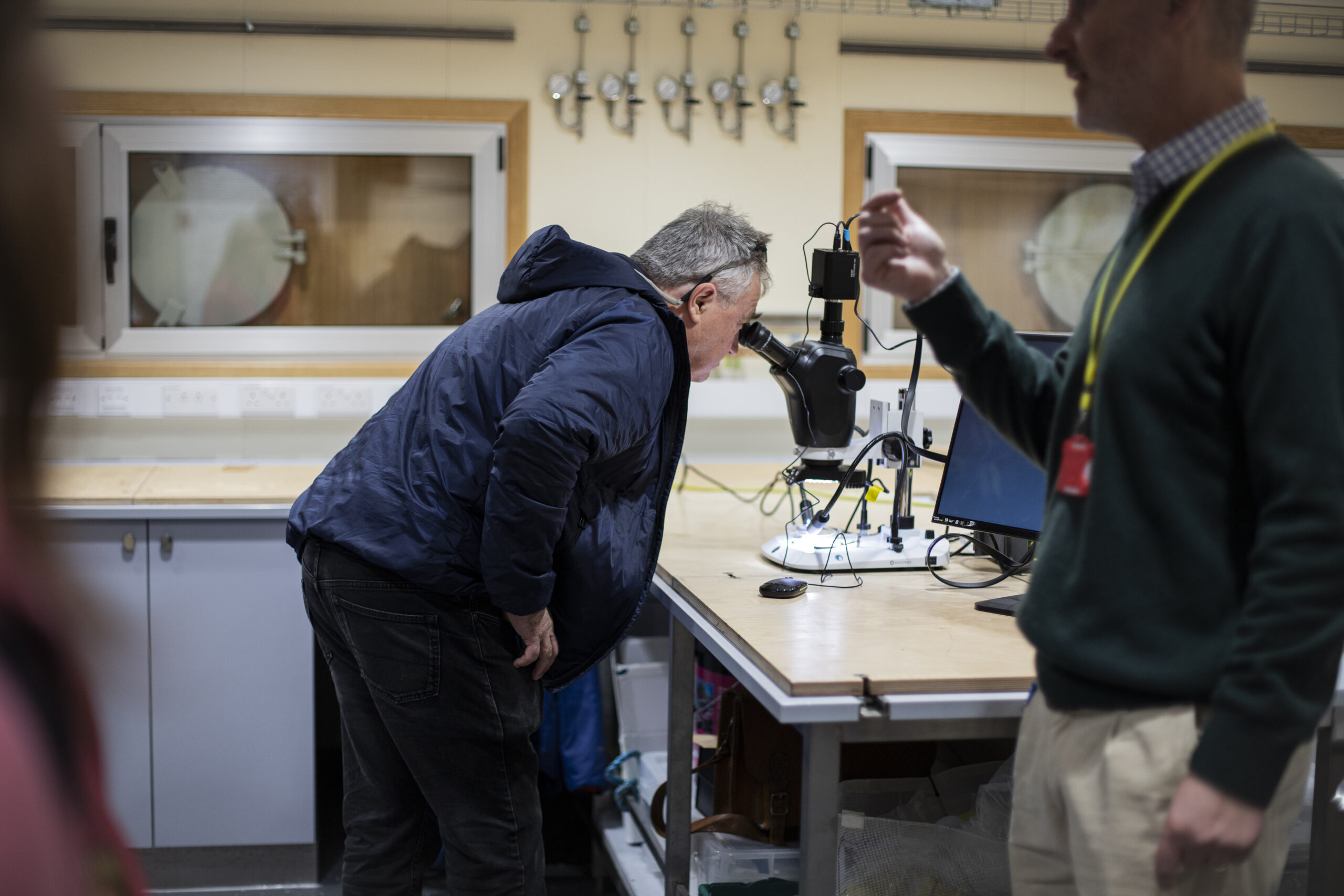
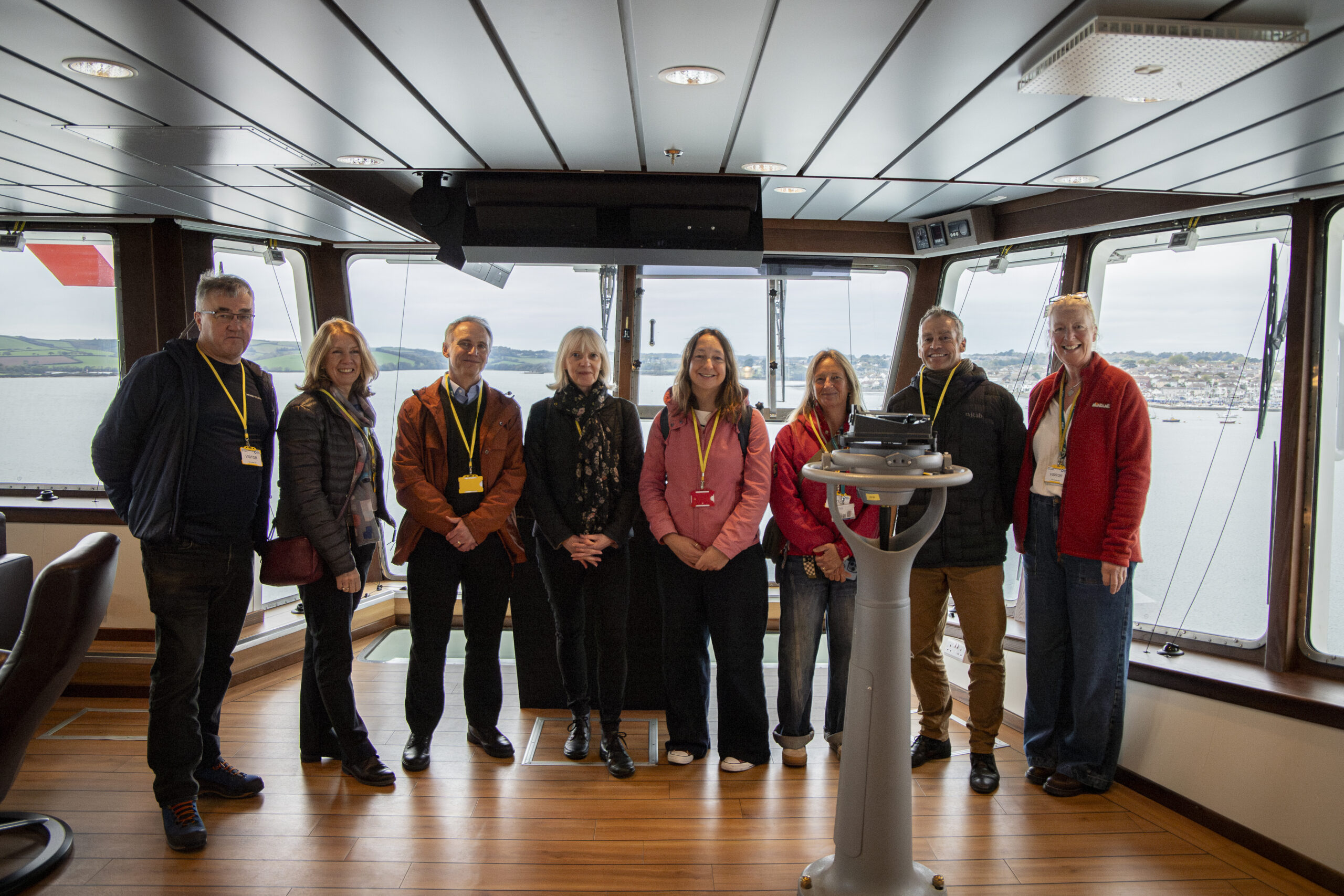
Images above: PML colleagues taking part in the VIP event onboard the ship
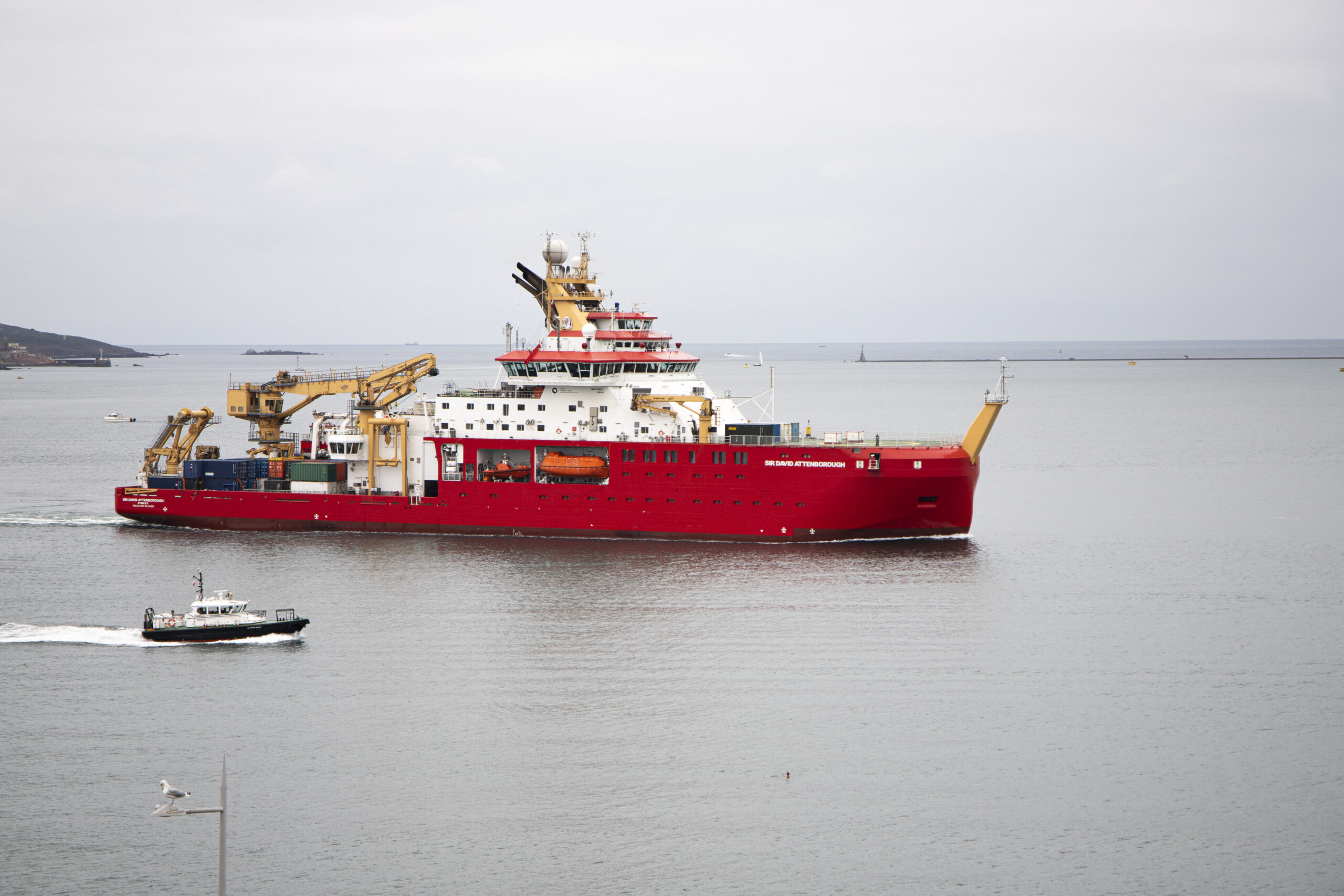
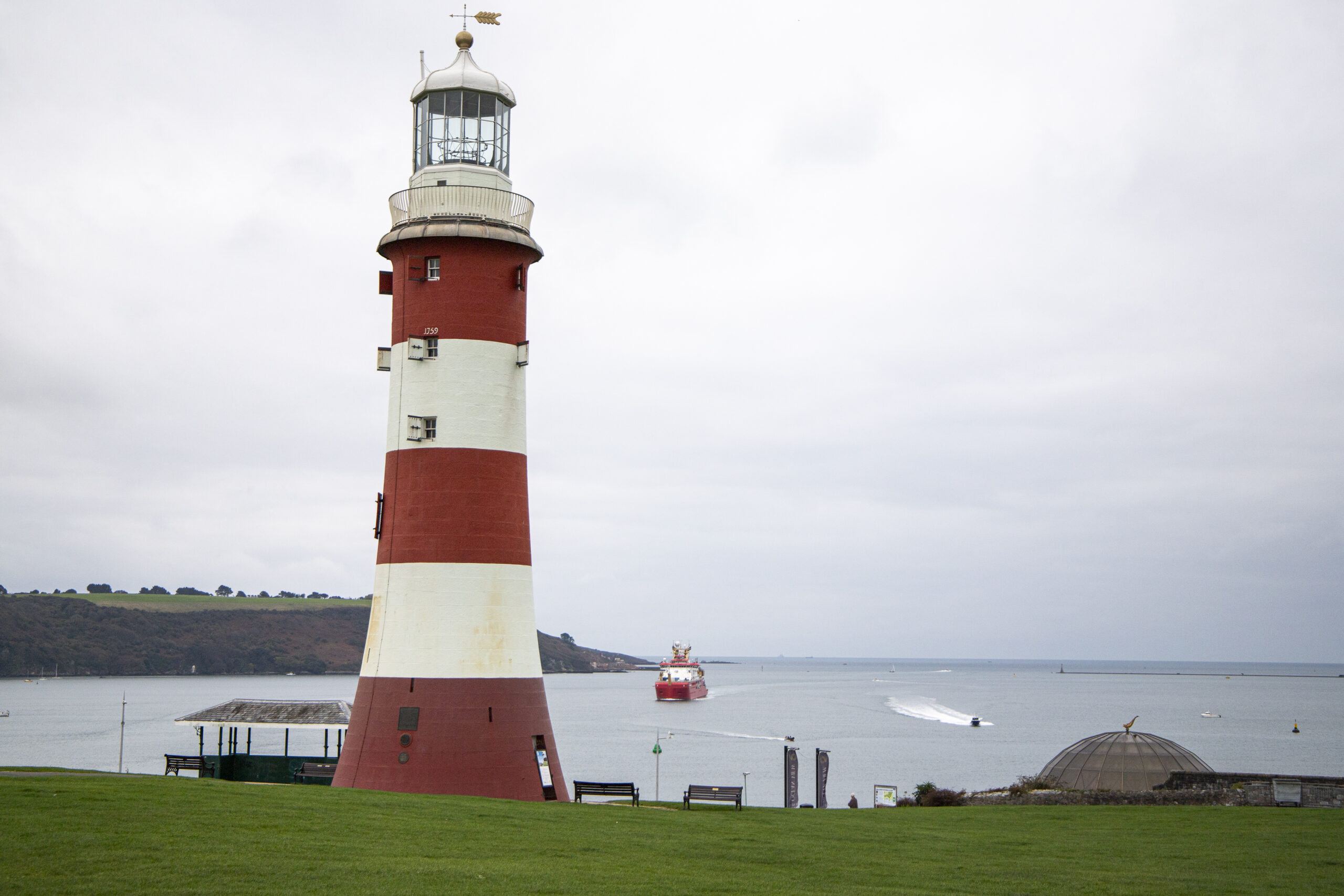
Images above: The ship pulling into Plymouth Sound.
The ship’s impressive range of 19,000 nautical miles and enhanced icebreaking capability enables scientists to conduct critical research activities including atmospheric science, biological and chemical oceanography, physical oceanography, marine geophysics and marine geology at both poles.
Equipped with next-generation technologies, she has the capability to deploy and control large numbers of remotely piloted instruments simultaneously. Robotic submarines, marine gliders and airborne robots can collect data on ocean conditions and marine biology, delivering real-time information to scientists in the ship’s onboard laboratories.
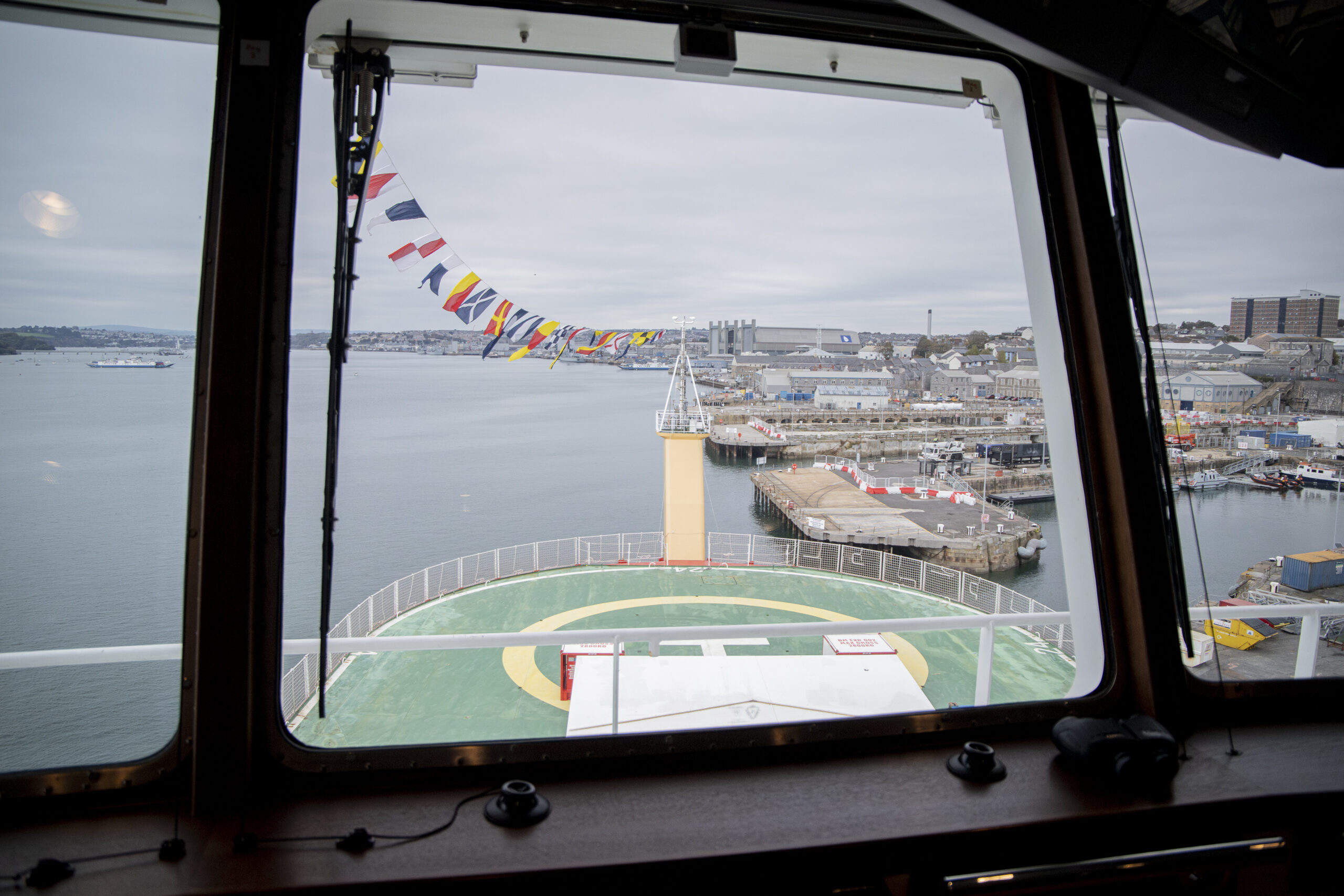
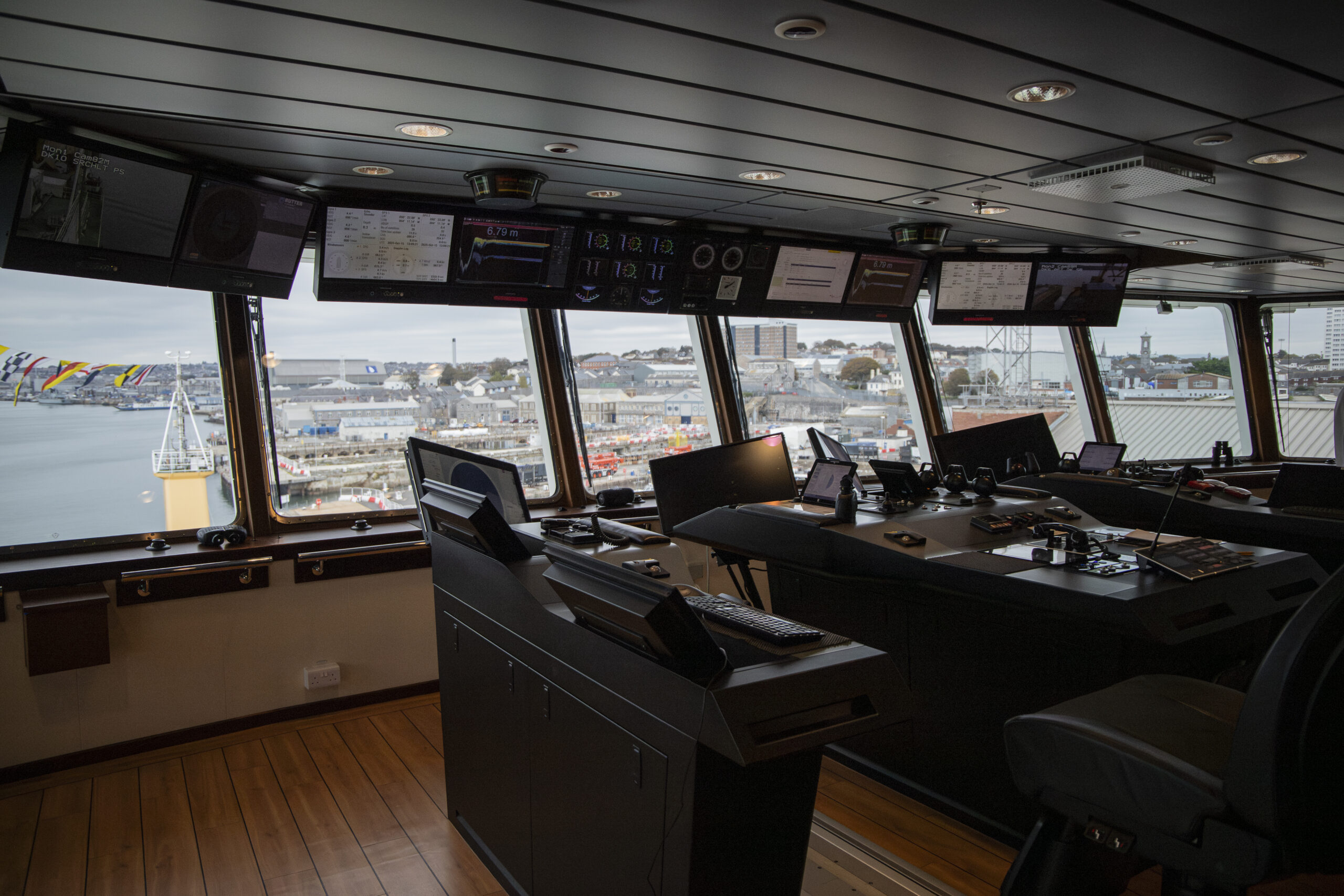
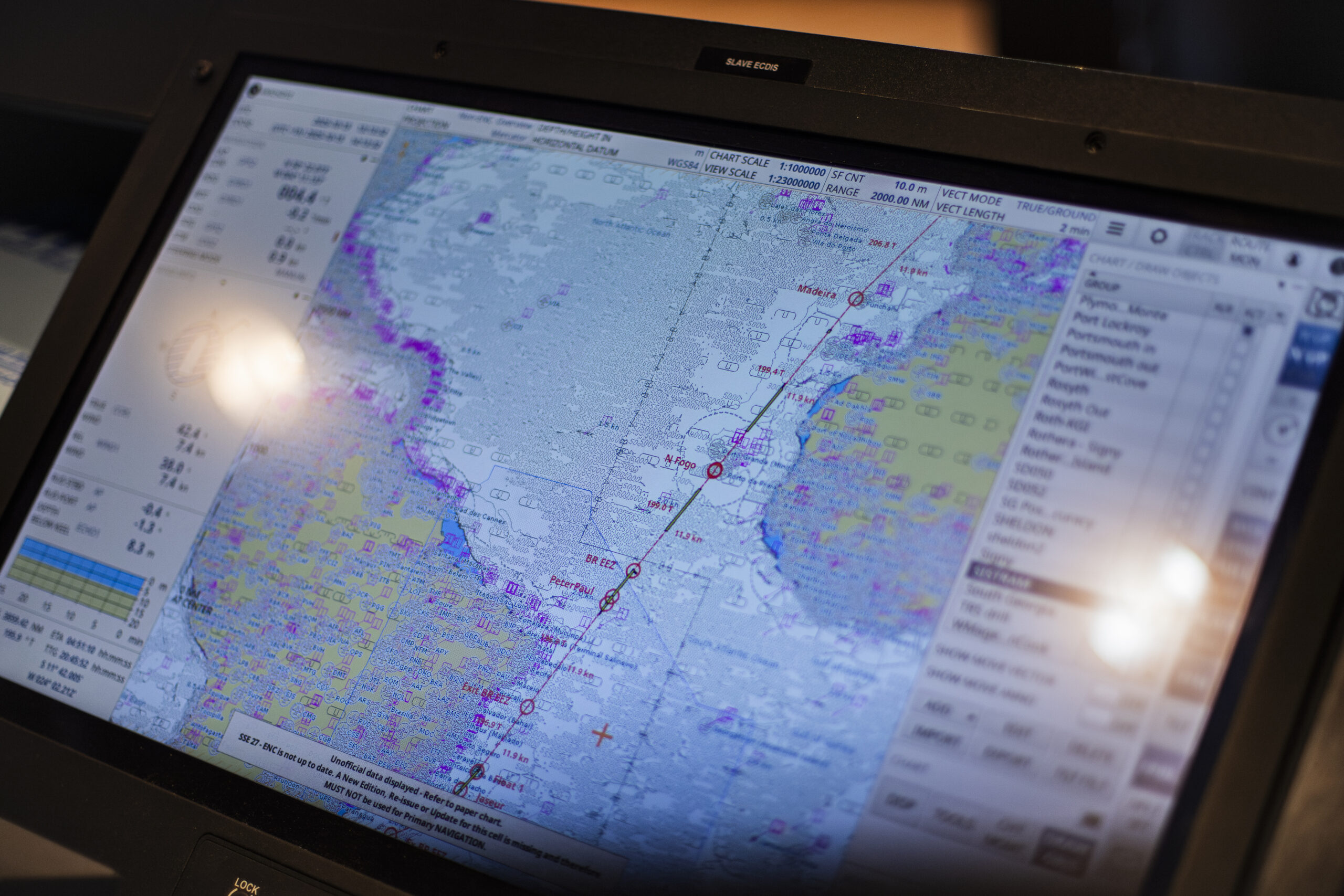
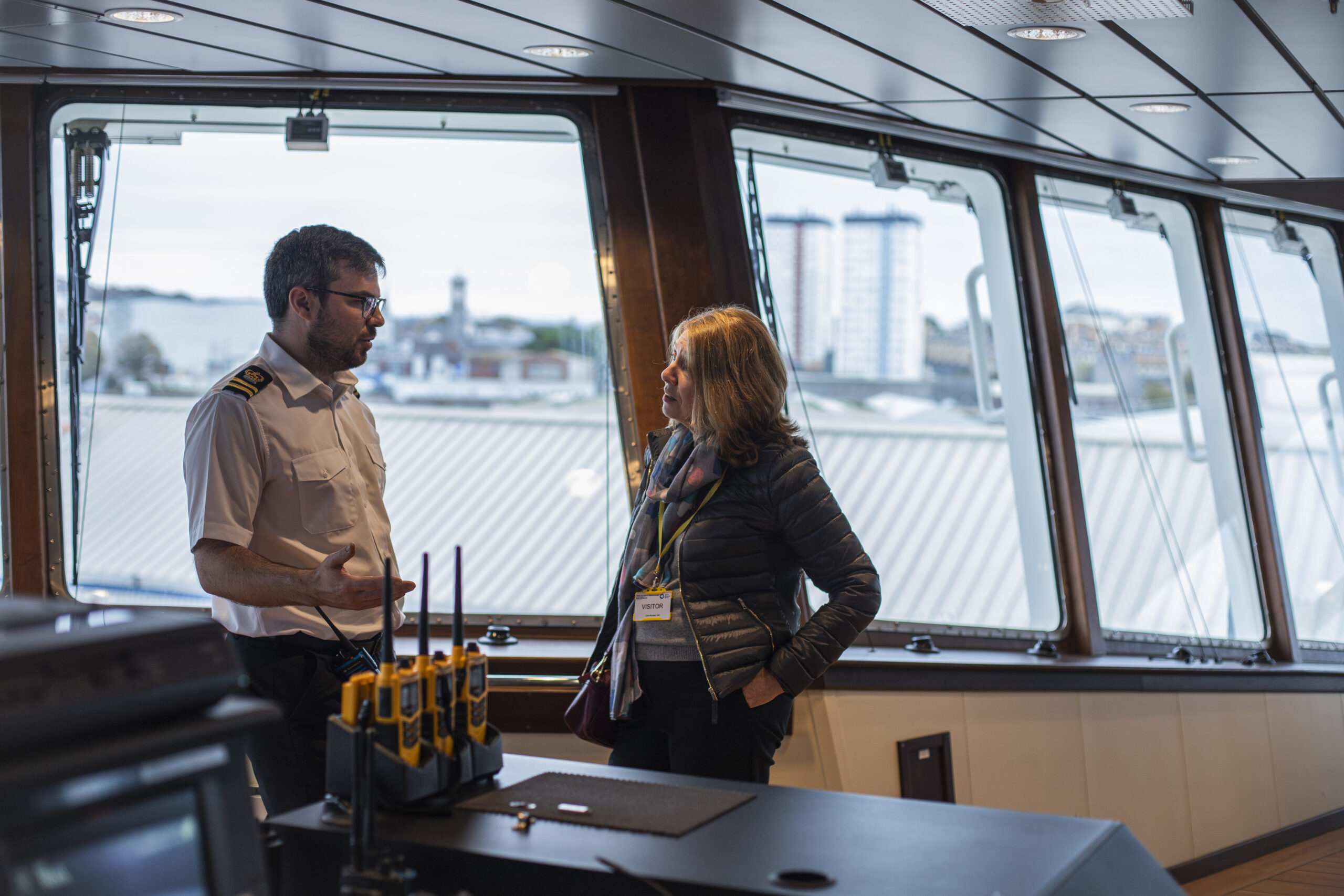
Images above: Photos from the tour, including the control room and helicopter pad
PML activity on the RRS Sir David Attenborough
Over the years, PML scientists have taken part in various activities and expeditions on the vessel:
- SDA Science Trials: In 2023, PML’s Chemical oceanographer Malcolm Woodward joined a team of 30 national and international scientists, engineers and technical staff working on the British Antarctic Survey’s brand-new ship for almost two months of science trials – the first to test the ship’s science capabilities in cold and deep polar waters.
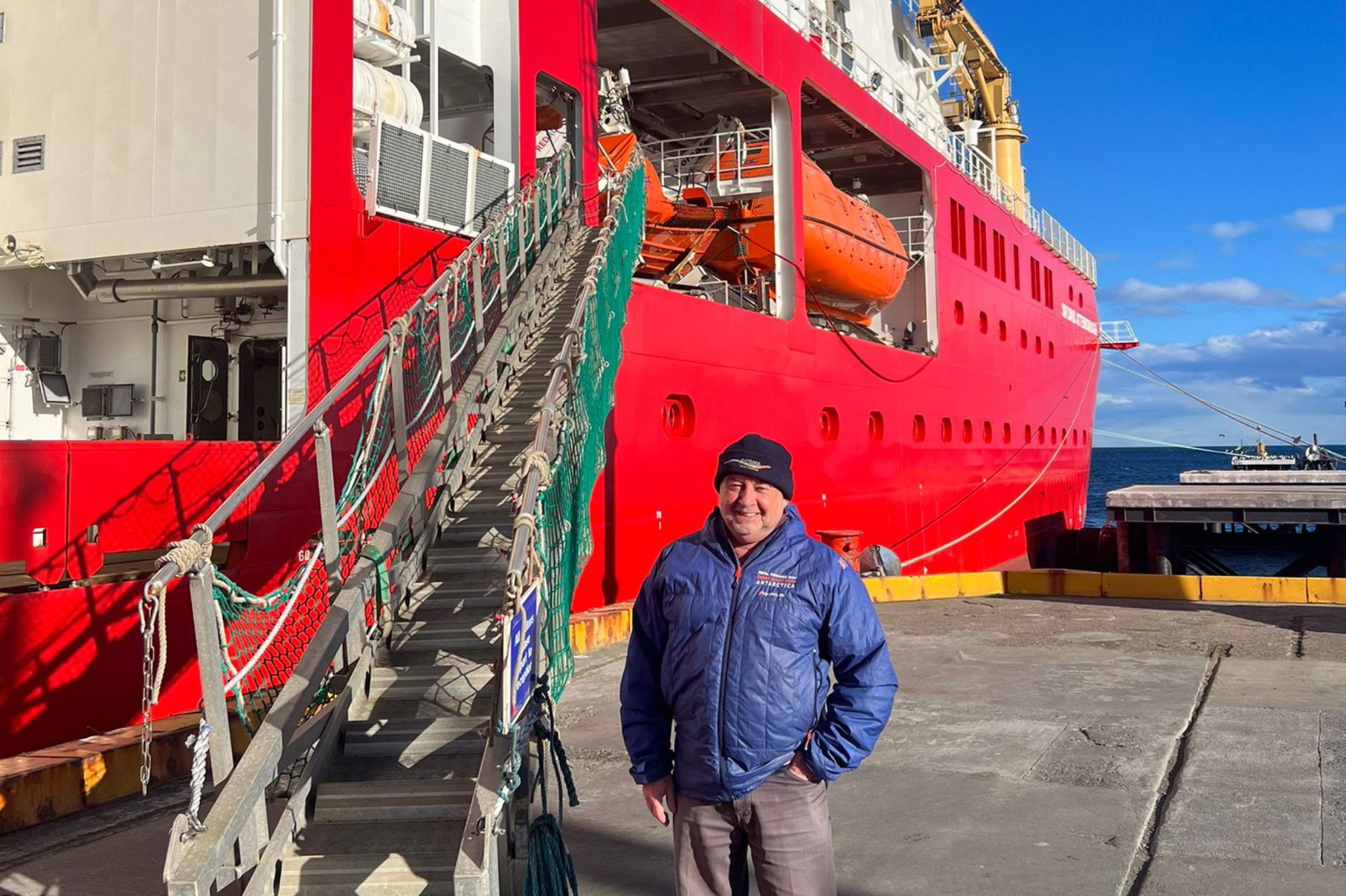
- The PICCOLO project. In 2024, a multidisciplinary team of scientists joined an ambitious 30-day scientific expedition aboard the ship, as part of the PICCOLO project. The project aims to understand how carbon moves through the Southern Ocean – one of the planet’s most remote and least explored regions. By studying how carbon in seawater interacted with the atmosphere, sea ice, and marine life like phytoplankton and zooplankton before sinking back into the deep ocean, the project aims to reveal the processes that make this region the world’s largest heat and carbon sink.
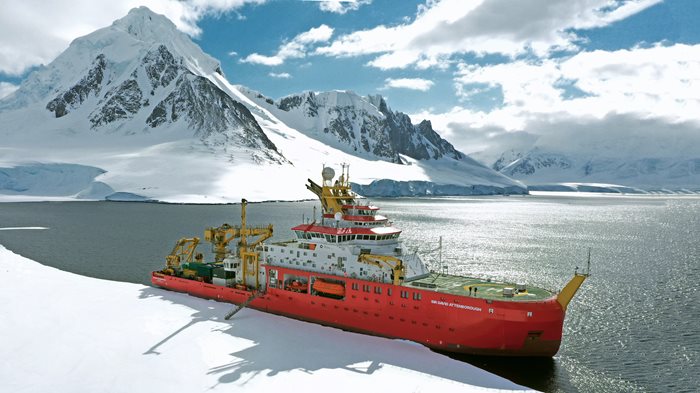
Image: The RRS Sir David Attenborough pictured in Antarctica for the PICCOLO project. credit: British Antarctic Survey.
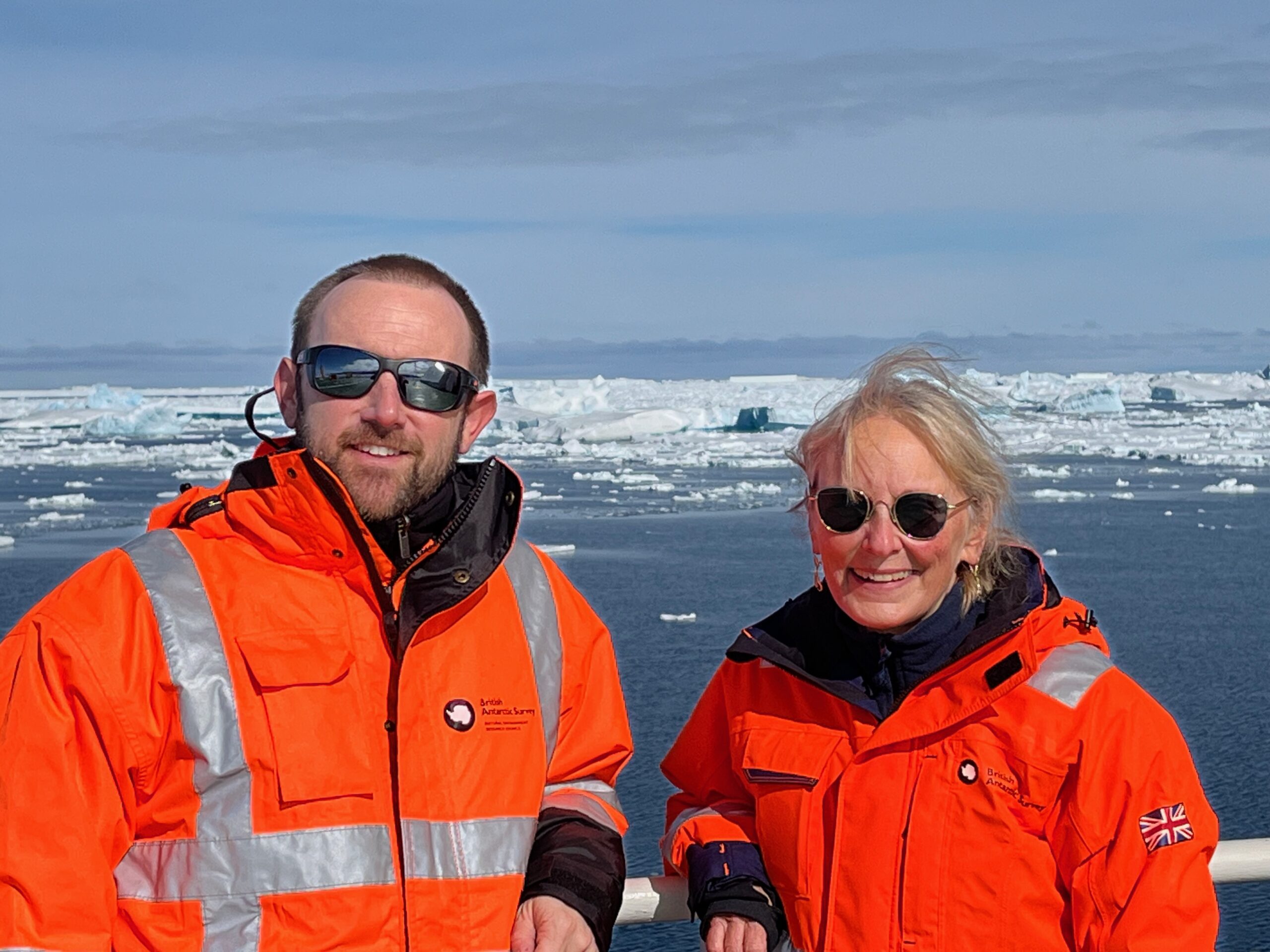
Image: PICCOLO co-leads PML’s Professor Tom Bell and Professor Karen Heywood of the University of East Anglia. Photo credit: Simon Ussher.
- More recently, PML has installed technology onboard the ship for continuous environmental monitoring as the ship moves, including a CO2 flux system and sea surface imaging system. Earlier this month, PML scientist Dr Loren Temple and technologist Jani Pewter boarded the ship in Harwich to service the instruments on board, which collect data for the PICCOLO and CARES project.

Image: PML’s Dr Loren Temple and Jani Pewter pictured before boarding the RRS Sir David Attenborough in Harwich.

Image: PML technology has been installed on the vessel, including a CO2 flux system and sea surface imaging system. Jani said: ”The CO2 flux system measures the transfer of CO2 between the ocean and the atmosphere, and the imaging system takes images of the sea surface, which we look at to determine how much of the sea is covered by ice or whitecaps. Our research aims to determine whether the presence of ice and/or whitecaps affects the rate of flux.”
The naming of the ship captured significant public attention in 2016, when a public poll invited suggestions for the vessel’s name. The tongue-in-cheek suggestion of “Boaty McBoatface” became a viral sensation – this title was eventually given to one of the vessel’s remotely controlled submersibles, with the ship itself ultimately named after the renowned BBC naturalist Sir David Attenborough.
For more information visit RRS Sir David Attenborough – British Antarctic Survey
